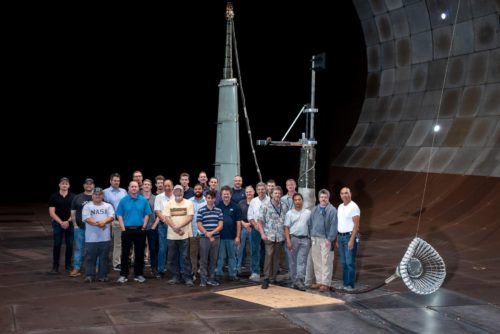The U.S. Navy has successfully carried out wind tunnel testing and demonstrations of its Actively Stabilized Refueling Drogue System (ASDRS) in August last year.

Photo: U.S. Navy
The article from NAVAIR SBIR/STTR Program Management Office says this was made possible with inputs from another system, the Optical Reference System (ORS).
The service also revealed how the system works, saying that the “ASDRS consists of a pair of aluminum shrouds that can rotate mounted onto the exiting hose end-refueling coupling. On these shrouds are pairs of lift and roll strakes that produce the lift force to counteract the disturbance and the roll torque needed to generate power that will stored in a system of onboard super-capacitors. A pair of DC motors controlled by an onboard control law system drives the drogue control system. When the system is not in active mode, the DC motors recharge the super-capacitors.”
The ORS consists of a pair of high-resolution cameras, image processing algorithms, and data storage. It provides the drogue position feedback to the ASDRS.
Capt. John Dougherty, PMA-201 Precision Strike Weapons, said the results from the demonstrations showed that ” these technologies have the potential to transform the aerial refueling mission.”
PMA-201 will now work on the next iteration of the system starting in 2021.
For more information, hit the Source below